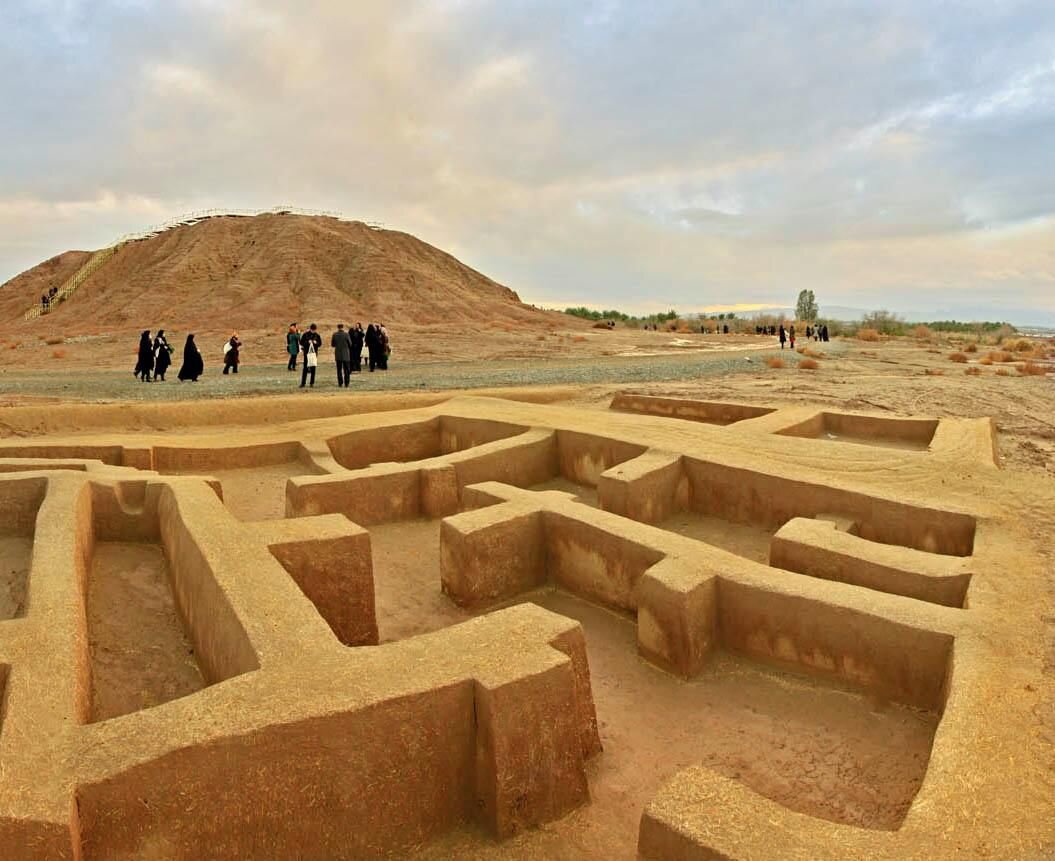Aerial mapping of Jiroft archaeological sites conducted for first time

TEHRAN - For the first time, aerial mapping and imaging have been conducted over key archaeological sites in Jiroft, a region renowned for its Bronze Age ruins dating back to the 3rd millennium BC.
The initiative marks a significant step forward in the documentation and preservation of one of Iran’s most historically rich areas, according to Ghader Shirvani, an official in charge of historical sites in the south of Kerman province.
The aerial survey was carried out over the ancient city of Old Jiroft and the smaller site known as Qal’eh Kuchak (Small Fortress), the official said on Monday. “The project aims to enhance the documentation process and support ongoing archaeological and conservation efforts.”
Situated in southern Iran, Jiroft is widely believed to be a cradle of civilization, holding invaluable historical and cultural significance.
“This is the first time such detailed aerial imaging and mapping have been done in the region,” Shirvani said. “The project was made possible through cooperation with the Agourchin Co., the contractor of the Jiroft airport project, which provided high-resolution photographs and video footage.”
Earlier in March, Iran’s Minister of Cultural Heritage, Tourism, and Handicrafts, Seyyed Reza Salehi-Amiri emphasized the global significance of Jiroft’s ancient civilization and called for greater efforts to showcase its historical and cultural value to the world.
Speaking at an administrative council meeting in Jiroft, Salehi-Amiri highlighted the deep historical roots of the region, noting that Jiroft is not just an ancient city but a symbol of identity, history, and civilization. “If other nations possessed such a civilization, they would build their national economy around it. Unfortunately, we have yet to fully present Jiroft’s civilizational value to the world,” he remarked.
Jiroft is recognized as the heart of an early Bronze Age culture, often referred to as the Jiroft or Halilrud (Halil River) culture. It is known for its distinctive artifacts and extensive urban settlements, shedding light on one of the earliest civilizations in the region encompassing present-day Kerman and Sistan-Baluchestan provinces.
Remarkable discoveries in the Jiroft region date from the early 21st century when severe floods along the Halil River unearthed numerous previously unknown tombs, revealing artifacts believed to date back to the Early Bronze Age (late 3rd millennium BC).
Reports initially described the sight of “an ancient object floating on the water’s surface.” Recognizing its value, villagers, impacted by two years of drought, swarmed the riverbanks the following day, searching for 5,000-year-old relics.
Despite its historical significance, geological factors led to the site’s oversight by tourists and archaeologists, who were typically more focused on locations like Mesopotamia, situated roughly 1,000 km away.
Layers of sediment were washed away, exposing the remains of an ancient cemetery. Locals and looters quickly recognized the importance of the find and moved to collect and sell the artifacts they had found.
A cultural heritage expert, Saeid Shahrokhi, has said that the Jiroft Plain is an interconnected expanse where various regions such as Dakyanus, Konar Sandal, and other areas, cannot be viewed separately. “Human life has persisted in this plain for thousands of years, making it a unique setting for historical continuity and cultural richness.”
AM
Leave a Comment